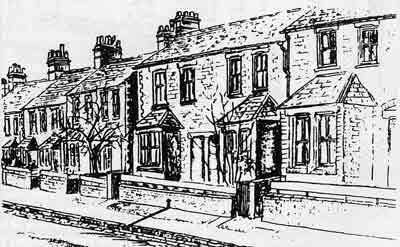JERICHO ECHO ARTICLE
More houses on the horizon

New developments will add to Jericho accommodation in the near future, but this will do little to satisfy the demand.
May 1997
Walkers along the canal will soon be faced with another striking new building. Lucy's will probably be given planning permission for a new block of flats. This five-storey building will be on what is now the southernmost part of their factory site and will have access through the wrought-iron gate to Lucy's at the bottom of Juxon Street. This development is part of a steady evacuation of Lucy's from Jericho, as they move more engineering activities to their new premises in Thame. Local residents on the whole seem to be in favour of the new building. Some are concerned about traffic but others feel that it will at least be an improvement on the rumbling of heavy lorries down Juxon Street. Others think that the building should not have so many storeys. One of the conditions that the Council placed is that the development should include a new play area for children. The other main development site in Jericho is also along the canal - where the Orchard Cruisers boatyard used to be. This site is owned by British Waterways and already has planning permission for 10 terraced 'town houses', a café, offices, and 'chandlery' (a shop for boating supplies). In addition, there will be a piazza in front of the church with a bridge across the canal - along with a new 'winding hole' (a turning circle for boats). But nothing has happened so far because the developer dropped out. British Waterways now have a new developer but want to change the plan slightly. Instead of the chandlery they propose a larger café. Meanwhile the 'Rosamund the Fair' floating restaurant has taken up the remaining old building on the site to establish an office and a mooring for the boat during the summer. British Waterways propose that the same company should also run the enlarged cafe when the new development takes place - much to the disquiet of the Vicarage which does not relish the prospect of additional traffic. Both developments will add to the supply of housing in Jericho but seem unlikely to do much to meet the demand now that the housing market is looking up again. Estate agents say that properties in Jericho are being snapped up soon after they come on the market. One two-up two-down terrace, for example, has been rather ambitiously priced at £130,000, though will probably go for rather less. According to the 1991 Census, almost half the residents were tenants of private landlords, but it seems likely that tenancies will be reduced. According to Hannah Richardson of Allen and Harris, most purchasers now are buying for their own use. The small houses in particular that will only fit two people are now getting too expensive to allow a sufficient return on investment. Would-be landlords are more likely to look in the direction of East Oxford. The evolution of Jericho was the subject of a fascinating talk in April at a packed meeting of the Civic Society at St Barnabas School. Christine Cowham explained the evolution of the area. Jericho's intriguing mix of housing owes a lot, she said, to the Residents' Association in the 1960s and 1970s which together with the then Vicar and some local councillors resisted plans to bulldoze the whole area and turn it over to offices and light industrial use. Some of the property was too far gone and had to be demolished, but much has survived. While there is little risk of establishing new industrial sites, Christine Cowham warned of the danger of landlords, particularly the colleges, letting their properties run down to such an extent that they can argue for their demolition and replacement by, for example, higher density housing.This article appeared in Jericho Echo No 38, May 1997.
Jericho Echo editions